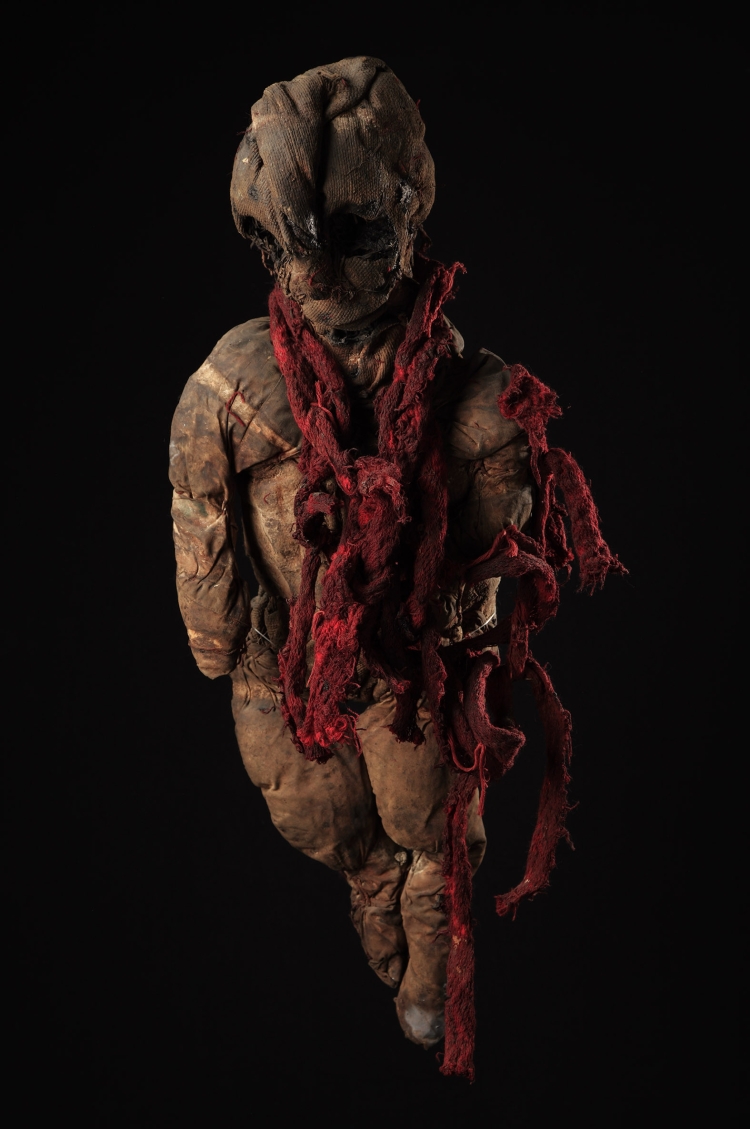Nedjar, Michel

untitled (Poupée, Chairdâme)
Michel Nedjar, untitled (Poupée, Chairdâme), between 1979 and 1980, cloth, knit fabric, plant fibre and diverse materials, 67 × 29 × 18 cm, photo : Atelier de numérisation, Ville de Lausanne, Collection de l’Art Brut, Lausanne
Author
Nedjar, Michel,
(1947), France
Biography
French artist Michel Nedjar was born in 1947 to a Jewish family of mixed Ashkenazi and Sephardic heritage. His father came from Algiers, while his Polish mother moved to Paris around 1923, seeking refuge from the pogroms.
It was only when he watched Alain Resnais’s documentary Nuit et Brouillard (Night and Fog) at the age of 14 that Nedjar became aware of the Holocaust and the history of his own family, many of whose members had lost their lives in the concentration camps. This revelation, and the shock of discovering the works of Aloïse Corbaz in 1969, were the triggers that spurred Nedjar to begin making art. As a child, Nedjar was fascinated by shmatte – the cloth his grandmother sold from a flea market stall in Paris – and by dolls, which he would dress up and alter in various ways. Between 1970 and 1976, he spent time travelling across Europe, North Africa and Asia. He also visited Mexico and Guatemala, where he learned about folk magic traditions and bewitchment dolls.
Nedjar made his first dolls in 1976 after returning to Paris. Two years later, suffering from deep depression, he started working on his Chairdâmes series: macabre dolls made from recycled cloth and dipped in ritual baths containing earth, dye and sometimes animal blood. These moving pieces, which evoke death and broken bodies, honour the victims of the Holocaust. Nedjar went on to develop other series: Poupées de voyage, Poupées Pourim (“Purim Dolls”, named after the Jewish festival), Poupées coudrées and Poupées enversées.
While drawing – with pencils, crayons, acrylic and wax – is a mainstay of Nedjar’s practice, he affirms that his entire work is “Poupée”. A trained tailor like his father, Nedjar uses shmatte, needle and thread to create many of his pieces. His fondness for these materials can be seen, for instance, in his Poupées coudrées and Objets coudrés, as well as in his more recent Coudrages series: compositions of printed images, leaflets of all kinds, photographs and packaging that he collects and then assembles and sews on a background of cloth or paper.
Michel Nedjar currently lives and works in Paris.
Shop
- The Outlanders. Forging Ahead With Art Brut (german version) (Books about Art Brut)
- The Art Brut Fascicle N°16 (The Art Brut Fascicles)
- Corps (french version) (Exhibition catalogues)
- Body (english version) (Exhibition catalogues)
- The Outlanders. Forging Ahead With Art Brut (english version) (Books about Art Brut)
- The Art Brut Fascicle N°26 (The Art Brut Fascicles)
- Croyances (french version) (Exhibition catalogues)
- Beliefs (english version) (Exhibition catalogues)
- Michel Nedjar ( Large format poster)
- Michel Nedjar (publications)










